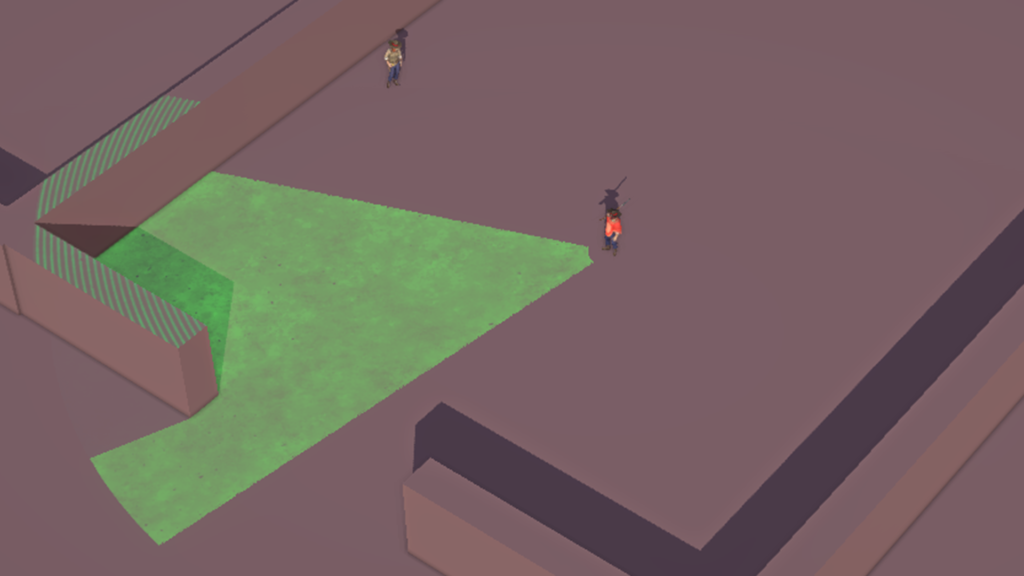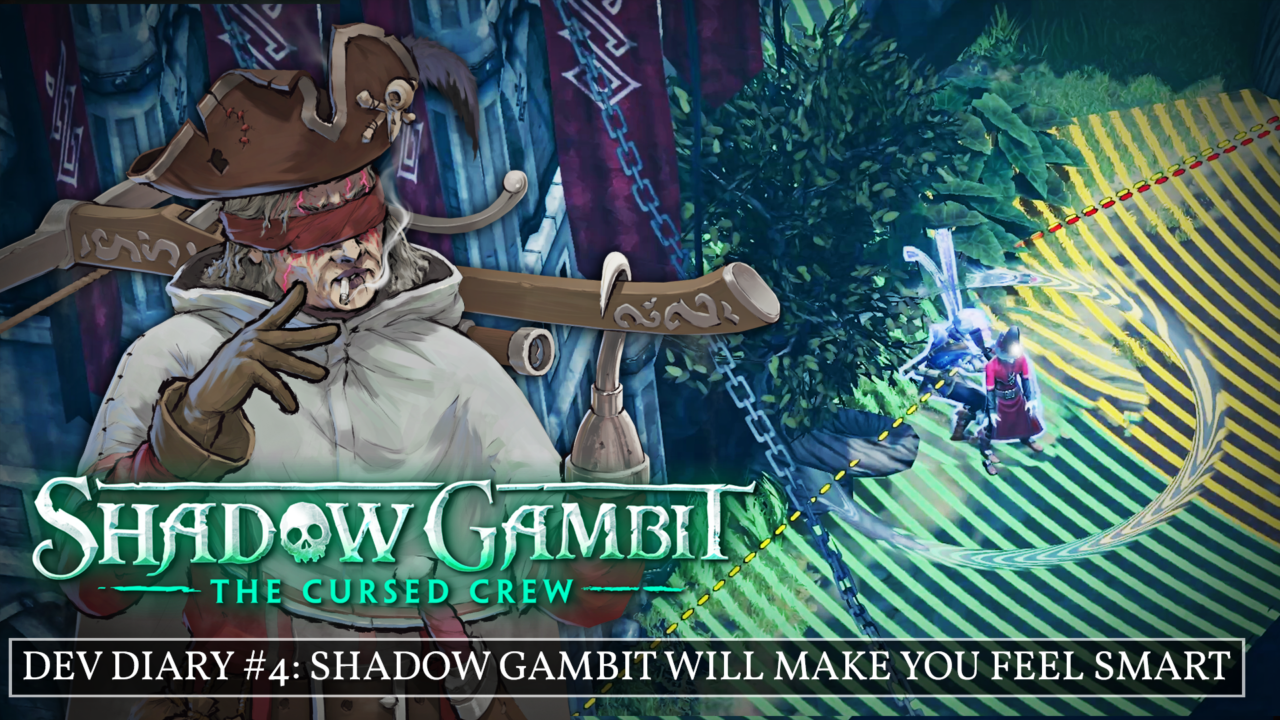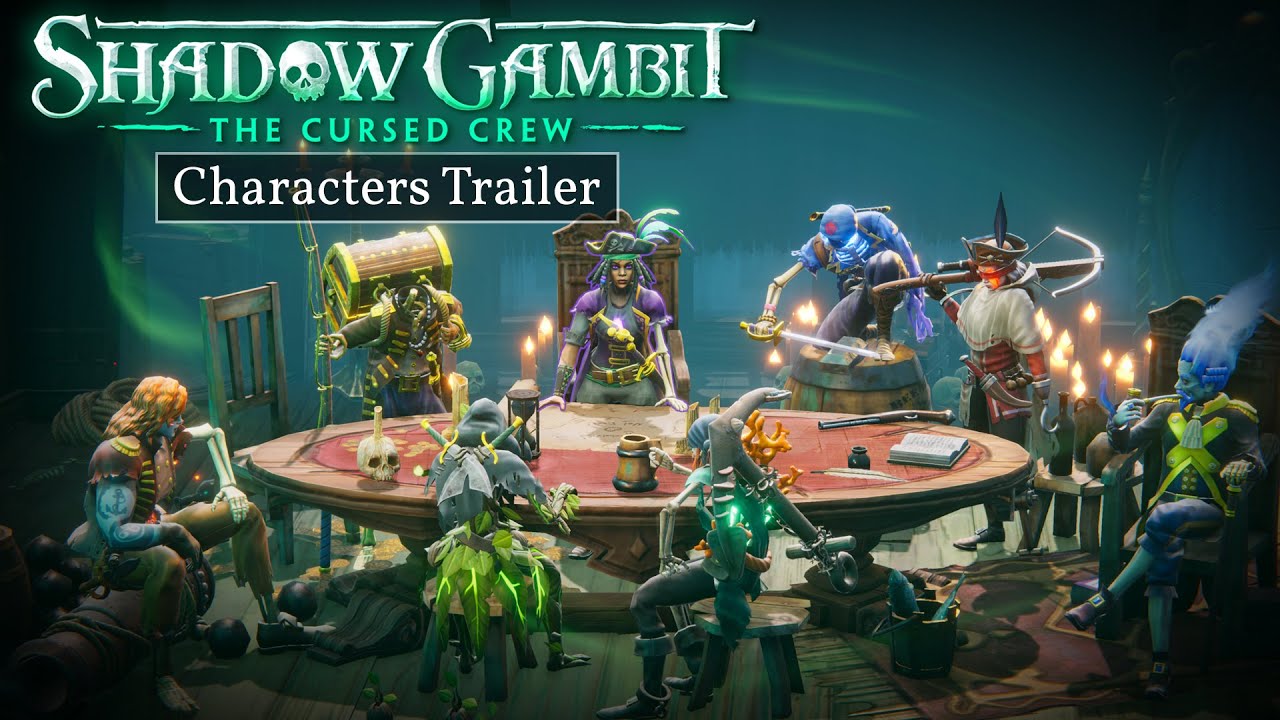Experience a mastermind fantasy in Shadow Gambit: The Cursed Crew. Magical abilities, an open game structure and free character selection make sure you can explore our new Stealth Strategy game in the way you want while pulling off the ultimate heist.
Our Head of Design explains how we reshaped our beloved Stealth Strategy formula to make it happen.
Hey, I am Elena and I joined Mimimi Games last year as Communications Manager. You probably already read from me, if you visit this blog or our social media frequently. With this monthly dev diary blog, I want to give our developers a chance to tell you about what it’s like to work on Shadow Gambit: The Cursed Crew and how their ideas and efforts shape the game.
While you just sit back and relax, I ask them everything you could possibly want to know about the game. After learning more about the look and the characters of Shadow Gambit, it’s now time to have a closer look at the gameplay and how it will make you feel like a mastermind.
What is a mastermind moment?
The Stealth Strategy genre itself is perfect to create a mastermind moment – the feeling of outsmarting your opponent with a superior more creative strategy. The whole gameplay evolves around giving the player agency and a lot of tools at hand, as Head of Design Mo Wagner explains:
“For us the key elements of Stealth Strategy are control, character design, an ‘open’ sandbox and iterative gameplay. That means snappy, responsive controls. As well as smooth game animations providing the feedback needed to assess the situation as well as the enemy AI, vision cones, noises and more making sure the player is able to make informed decisions.”
“It’s also important to make all characters feel special and unique, with a strong identity and vision they fulfill, while still keeping different characters and combinations useful in certain situations.”
“But it’s equally important to keep it open. There can never be only one solution. There always have to be multiple possible solutions and the players need to be aware of them. In our games almost anything you want to do will somehow work if you try enough. To encourage players to try different things and experiment we also keep it iterative and allow them to fail and try again, if something didn’t go as planned.”
How to pull it off in the game
That means every situation in game provides essentially the tools to create a mastermind moment for yourself. A challenge you can overcome by using the characters, their skills and the environment around them strategically:
“You often go step by step in the game, taking out individual guards or using distractions and abilities to get into specific positions. At some point you have ‘softened’ the enemy setup to a degree. Then you can make a giant move to solve the remaining big chunk of the setup.”
“This usually involves multiple characters using their abilities. Since it all happens almost at the same time, it feels very special. It has such a huge impact and is something you ‘prepared’ for by taking out the stragglers first, which makes you feel like a mastermind. Every small victory brings a lot of satisfaction like that, which is sort of the core-moment our game aims to create”.
Every character is a new opportunity
For Shadow Gambit: The Cursed Crew especially the different characters and how to combine them plays an important role in creating the mastermind moment. Their supernatural abilities provide even more freedom and room to experiment:
“You always have to think about the weaknesses your characters have. The long ranged sniper Theresa for example needs to regain her arrow after shooting. Other characters have low mobility and can’t climb or swim, so they are handicapped in their movement around the island.”
“To overcome those weaknesses, you have to think about the abilities your characters have. Can somebody maybe help the overcome what they struggle with? Quentin with his fishing rope might be able to lend Theresa a hand for example…”

But let’s not spoil too many of the synergies. The most exciting part of the Stealth Strategy gameplay is to figure them out for yourself.
How to make it work in an (almost) open world
Another important addition in Shadow Gambit is the more open game structure with different islands as handcrafted sandboxes, which also shapes the experience for the player and gives them more freedom. Mo explains how the game design team pulled that off:
“In general you need to set certain rules that players understand and then try to always be true to those rules. You accept anything that happens ‘within’ those rules as a designer, even if it feels broken, too powerful or weird.”
“The beauty of a sandbox is for players to feel like they might have found stuff that only they discovered and that might not be intended. So it’s important to just ‘let go’ of trying to control any of that too much. It would only create an experience that doesn’t allow the players to truly express themselves within the game system.”

Players get to explore different parts every island during each mission. They can choose their own paths, since every island is designed to allow multiple different approaches.
“Those certain core rules and boundaries need to be very well thought out because of that. They define the ‘box’ in sandbox and if this box is too loose everything crumbles and isn’t fun. So basically it’s about the designing this space and then accepting anything can happen within it.”
“For us that means thinking about how we handle entry and exit points or the character selection – we have to limit both somehow. We also removed things like extremely powerful abilities like Mugen’s ‘double kill’ from Shadow Tactics. They could cause a problem within the sandbox.”
How each island tells a story
But of course the different islands of the Lost Caribbean not only have to work from a gameplay perspective. They also have draw people in with exciting and fun level design:
“We tried around with it for quite a long time, building one big example island (that ultimately turned into Dread Vine’s Cove) to see how locations should look and feel, how it plays with different characters. We wanted to find a good core concept for each island. With this concept, the narrative and visuals had something to work with later – for example an island completely defined by a huge fortress of the evil Inquisition.”
“Then we build around that as much as possible. But it’s still challenging to make all the islands very different, since we need to be careful with how many art assets are created. Even though a lot of assets are re-used because of that, our artists found clever ways to make it work.”

Even though players re-visit islands in the game from time to time, the designers made sure it won’t get repetitive, as Mo clarifies:
“In the beginning we figured players would actually play the same areas a lot more often. Then we realized that that won’t be the case. In general you don’t really re-play areas very often, because missions usually take place in different parts of the islands. But there is of course a great replay value since you can choose different characters to approach an enemy setup from a different side. This can make an encounter feel very new and fresh, because your tools and challenges change.”

More options, but never too easy
Because of the open aspect of the islands there was also more focus on transition areas players have to get to to get from one part of the island to another, as he continues to explain:
“There is a larger emphasis on ‘in-between’ areas where enemy setups aren’t too hard and you just go through, kill some of them and get to the point where it actually gets difficult. Almost all encounters can be approached from all sides, which makes it different to design for us. There is no direction anymore we can focus on, since we never know where the players are coming from. So the level designers had to think way more openly about each encounter.”

But even though they are giving the player so many paths and tools at hands, the developers are still not worried about making the game too easy for them:
“It was a concern sometimes during development, but I don’t feel like that anymore. It’s just a little different because you have more options, which makes certain things easier to approach. But in the end you still need to come up with solutions to solve the puzzles and we could scale that enough based on wide range of difficulty settings for example.”
Essentially Shadow Gambit: The Cursed Crew can be played in different ways and provides a lot more flexibility to the player compared to Shadow Tactics or Desperados III while remaining challenging. Experienced players can also choose a harder difficulty setting, while newer players can choose the “normal” setting or adapt the challenge even more to their liking.
Join our crew
☠️ Join our Discord if you’d like to chat with us and our growing Mimimi community.
☠️ You can also follow us on Twitter | YouTube | Twitch | Facebook | Instagram |TikTok to stay up to date.
☠️ And we have a Newsletter if you’d like to receive updates directly from us by e-mail.
See you soon on the high seas!
Elena




